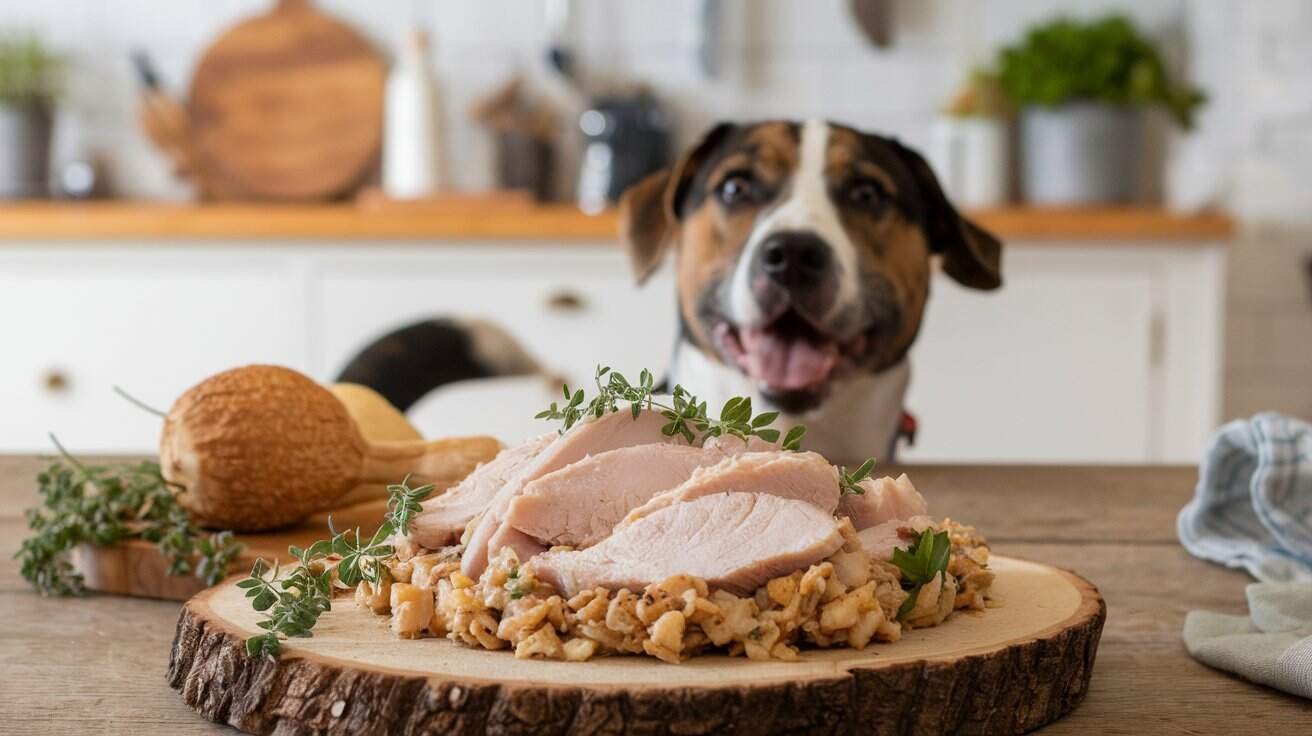The simple answer is yes, dogs can eat popcorn, but with some important caveats. Not all popcorn is created equal, and there are certain types that you should avoid giving to your dog. Let’s dive into the details to ensure that your dog can enjoy this snack safely.
Is Popcorn Good for Dogs?
Plain, air-popped popcorn can be a low-calorie treat for your dog. It’s high in fiber, which is beneficial for digestion, and contains small amounts of vitamins like vitamin B and iron. These nutrients are good for both dogs and humans, contributing to overall health.
However, the potential benefits of popcorn for dogs largely depend on how it’s prepared. Let’s take a closer look.
Types of Popcorn to Avoid
While plain popcorn can be safe, buttered, salted, or flavored popcorn can be harmful to your dog. Here’s why:
1. Buttered Popcorn: Butter is high in fat and calories, which can lead to obesity and pancreatitis in dogs if consumed in large quantities. Even small amounts of butter can upset your dog’s stomach.
2. Salted Popcorn: Salt is another ingredient to watch out for. Dogs require very little salt in their diet, and too much can lead to dehydration or sodium ion poisoning, which is potentially life-threatening.
3. Flavored Popcorn: Flavored popcorn often contains artificial additives, sugars, and spices that can be toxic to dogs. For example, caramel and cheese-flavored popcorn are usually loaded with ingredients that aren’t safe for dogs.
Potential Risks of Feeding Popcorn to Dogs
Even if you stick to plain, air-popped popcorn, there are still some risks to consider:
1. Choking Hazard: Popcorn kernels that haven’t fully popped can be a choking hazard for dogs. These hard pieces can also get stuck in your dog’s teeth or gums, leading to discomfort or even dental issues.
2. Digestive Problems: Popcorn is high in fiber, which can be good in moderation, but too much fiber can cause digestive issues in dogs, such as diarrhea or constipation.
3. Obesity: While popcorn is low in calories, feeding too much of it—especially if it’s buttered or salted—can contribute to weight gain and obesity in dogs.
How to Safely Feed Popcorn to Your Dog
If you want to share popcorn with your dog, it’s crucial to do so in a safe and controlled manner. Here’s a step-by-step guide:
Step 1: Choose the Right Popcorn
Always opt for plain, air-popped popcorn without any added butter, salt, or flavorings. You can easily make this at home using a popcorn maker or in a microwave without oil.
Step 2: Check for Unpopped Kernels
Before giving popcorn to your dog, go through it carefully to remove any unpopped kernels. These can be hard and potentially harmful if ingested.
Step 3: Start with Small Quantities
Introduce popcorn to your dog in small amounts. Offer a few pieces and observe your dog for any signs of digestive discomfort, such as vomiting, diarrhea, or gas. If your dog seems fine, you can gradually increase the amount, but always keep it as an occasional treat.
Step 4: Monitor Your Dog
While your dog enjoys the popcorn, keep an eye on them to ensure they chew the pieces properly and don’t try to swallow them whole. This can help prevent choking and other issues.
Step 5: Balance with a Healthy Diet
Popcorn should only be given as a treat and not a regular part of your dog’s diet. Ensure your dog’s primary nutrition comes from high-quality dog food that meets all their dietary needs.
Anecdote: Popcorn and My Dog Buddy
I remember the first time I shared popcorn with my dog, Buddy. We were watching a movie, and I accidentally dropped a piece on the floor. Buddy quickly scooped it up and gave me the most hopeful look for more. I did some research and found that plain popcorn was safe, so I air-popped a small batch just for him. Now, every movie night, Buddy knows there’s a special treat in store. He loves his popcorn, and I love sharing those moments with him.
Alternatives to Popcorn for Dogs
If you’re not comfortable giving your dog popcorn or if they don’t seem to like it, there are plenty of other safe and healthy treats you can offer:
- Carrots: Crunchy and low in calories, carrots are great for your dog’s teeth and overall health.
- Apples: Sliced apples (without seeds) provide a sweet, fiber-rich treat.
- Sweet Potatoes: Cooked and sliced sweet potatoes are rich in vitamins and make a tasty treat.
- Blueberries: These small berries are packed with antioxidants and are easy for dogs to eat.
These alternatives are not only safe but also provide essential nutrients that can contribute to your dog’s overall well-being.
When to Avoid Feeding Popcorn to Your Dog
There are certain situations where you should avoid giving popcorn to your dog altogether:
- Dogs with Digestive Issues: If your dog has a sensitive stomach or a history of digestive problems, popcorn may not be the best treat.
- Dogs Prone to Obesity: If your dog is overweight, even small amounts of popcorn could contribute to weight gain.
- Puppies or Small Dogs: Smaller dogs or puppies may have more difficulty chewing and digesting popcorn, increasing the risk of choking or gastrointestinal upset.
Conclusion: Should You Share Your Popcorn with Your Dog?
In conclusion, dogs can eat popcorn safely, but only if it’s plain, air-popped, and given in moderation. While popcorn can be a fun and tasty treat, it’s important to be mindful of the potential risks and to always prioritize your dog’s health and safety.
If you decide to share your popcorn, make sure it’s prepared the right way and offered in small quantities. And as with any treat, moderation is key. By following these guidelines, you can enjoy a movie night with your dog, knowing that they’re getting a safe and enjoyable snack.



